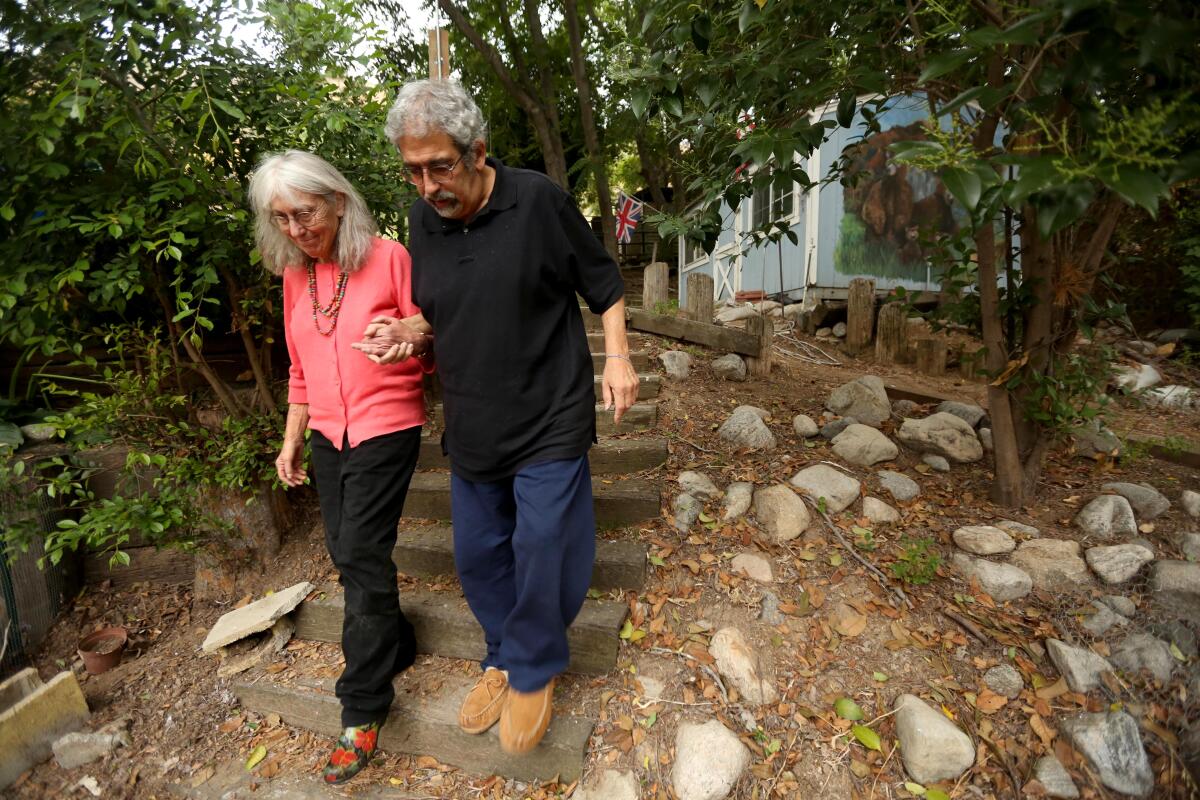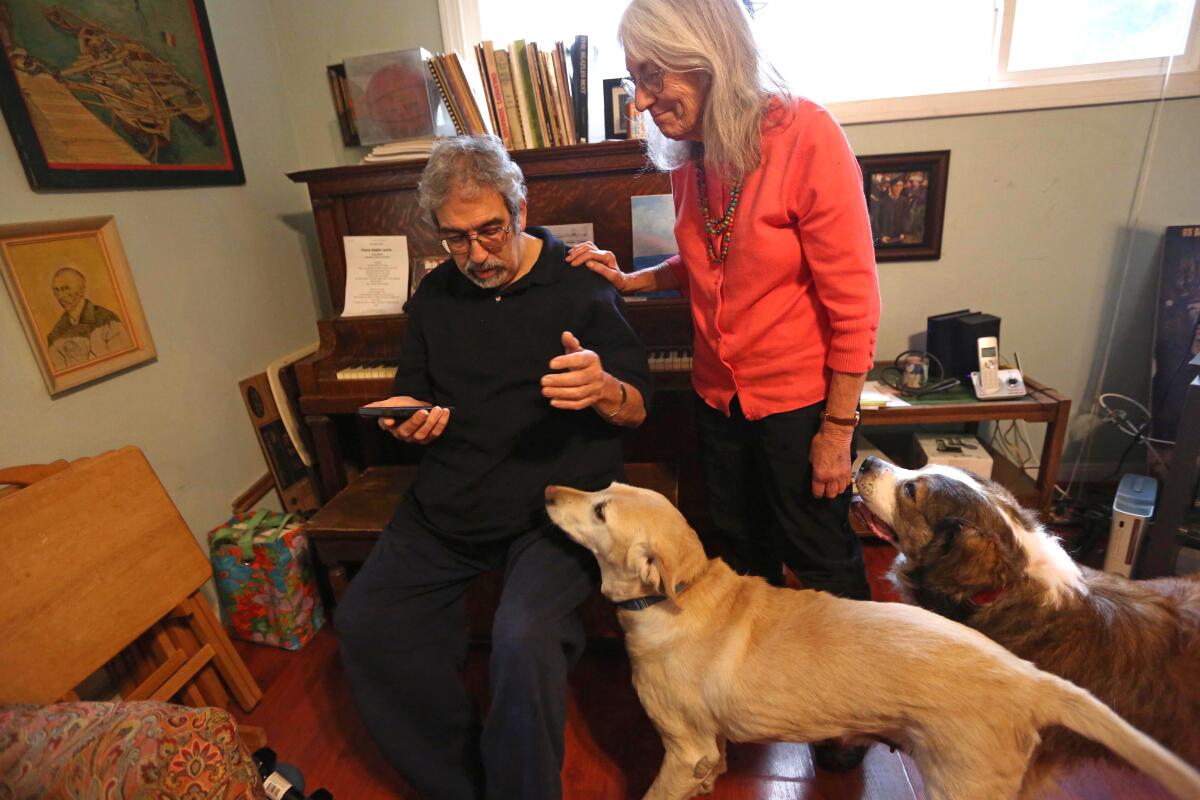7 million people have Alzheimer’s. Why is the Trump administration derailing research?

- Share via
Dr. Charles DeCarli, co-director of the UC Davis Alzheimer’s Research Center, got the news in a call from a colleague on March 24.
“Your study was terminated.”
DeCarli had been conducting a six-year examination, funded by the National Institutes of Health, of brain and vascular conditions that can be risk factors for dementia. The study, involving hundreds of medical staff, 14 research sites, and 1,700 patients at 19 clinical locations in the U.S., was building toward a goal of 2,250 patients.
Steve Lopez
Steve Lopez is a California native who has been a Los Angeles Times columnist since 2001. He has won more than a dozen national journalism awards and is a four-time Pulitzer finalist.
“This was the culmination of my career, the pinnacle of my research” over the last 38 years, DeCarli said.
The $53-million study, paid in annual allotments, was approved during President Trump’s first term. But in Term Two, the administration has taken a chain saw to universities, federal jobs and federal funding for scientific research, which has prompted talk of a brain drain, with scientists looking for work in other countries.
The termination letter from NIH informed DeCarli that his study, with its “artificial and non-scientific categories,” was on the chopping block because it “no longer effectuates agency priorities.” The UC Davis study was one of 14 such research projects notified in March that funding was being terminated.
About 7 million U.S. residents aged 65 and older have Alzheimer’s, the nation’s seventh-leading cause of death. Given the cresting age wave, the number is expected to roughly double in the next 35 years. So it doesn’t make sense that a deeper understanding of a complex set of unremittingly cruel brain diseases that decimate the lives of victims, and their loved ones, is no longer a priority.

DeCarli suspects he was targeted because of the name of his study:
“The Clinical Significance of Incidental White Matter Lesions on MRI Amongst a Diverse Population with Cognitive Complaints.”
DEI — diversity, equity and inclusion — programs are on the administration’s hit list. But in this case, “diverse” was a reference to a spectrum of health and age, and educational and racial backgrounds of patients.
With the help of UC Davis lawyers, DeCarli appealed the decision, but he also had to begin shutting down the study in anticipation of a second rejection or a long appeal process.
The appeal was successful, and funding was restored on April 11, but DeCarli is still playing catch-up.
“There were big-time disruptions,” he told me.
Clinical partners, who each had to contact as many as 100 patients with news of the termination, had to reach out again to tell them the green light was back on.
But for how long?
Nobody seems to know, said Russ Paulsen of UsAgainstAlzheimer’s, a nonprofit advocacy group. When I spoke to him on Wednesday, Paulsen had just watched a Senate hearing in which Appropriations Committee Chair Susan Collins (R-Maine), demanded that NIH cuts be restored.

“I think there is broadly bipartisan support” for continued research into Alzheimer’s, Paulsen said. And the official word at Health and Human Services is that the administration remains committed to “robust biomedical research” and “maintaining our global leadership in science and technology.”
But that claim doesn’t square with the dismissal earlier this year of 1,000 NIH employees, or with news accounts of a plan to slash 30% of the Health and Human Services budget and 40% of the NIH budget.
“It’s hard to imagine somebody opposed to finding cures, and yet we have no explanation for why they’re proposing a 40% cut,” Paulsen said.
“We know that funds are flowing out the door far slower than they have in many years, and we know that researchers are submitting high-quality research and getting ‘answer pending’ or getting rejected,” he added. “And we know that existing multi-year grants are being canceled or payment is being delayed.”
In March, Rose Shalom of Sunland lost her husband, Mannie Rezende, who had slowly deteriorated from Alzheimer’s over several years. Shalom called the disruption of research egregious and immoral, and she said those who control the purse strings on research should “spend some time with someone with Alzheimer’s and their caregivers to understand the unique horror of this disease.”
I visited Rose and Mannie in 2023 at their home and at OPICA, the West L.A. adult day-care center where Mannie spent his days with a few dozen others on the same path.
“As we are living longer, more and more people will be diagnosed with this disease,” Shalom said. “The emotional and financial toll on the patients and their caregivers is beyond description.”
There is, unfortunately, no cure on the immediate horizon. But DeCarli said there have been some encouraging advances, including medication that can help slow the progression of cognitive decline, and improved diagnostics that can lead to earlier intervention.
The U.S. is both a world leader and a collaborator in medical research, DeCarli said. The process is integrated, “with people working on different parts … of the same question, and true discovery sometimes comes from interacting” with each other.
The Trump administration seems to have a different agenda.
It includes:
· Dismantling the U.S. role in solving medical mysteries.
· Dismissing hundreds of researchers studying the impact of global warming.
· Driving scientists to look for work in other countries.
Who knew there’d be so many backwater swamps, potholes and detours on the road to making America great again.
More to Read
Sign up for Essential California
The most important California stories and recommendations in your inbox every morning.
You may occasionally receive promotional content from the Los Angeles Times.












